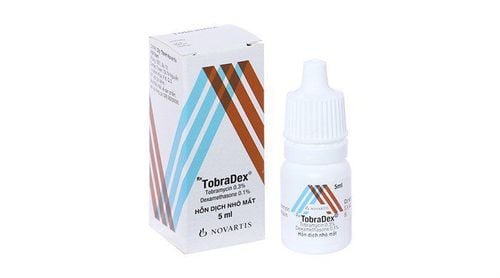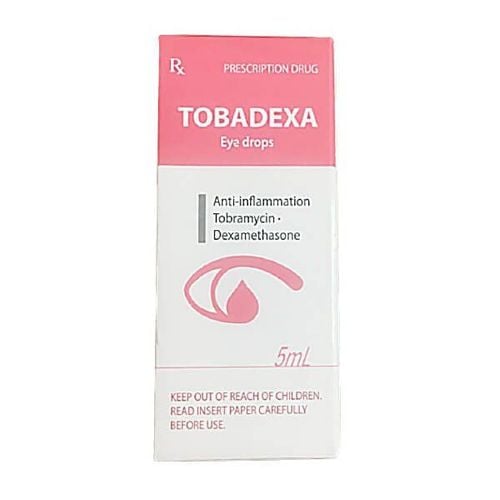This is an automatically translated article.
Flomoxad is used to treat eye infections caused by susceptible strains of bacteria. The drug is prepared in the form of an eye drop solution, only to be used under the prescription of a doctor.1. What is the use of Flomoxad?
Flomoxad is a product of Bharat Parenterals Limited (India) used to treat eye infections.In 1ml of Flomoxad, there are the following ingredients:
Moxifloxacin Hydrochloride equivalent to Moxifloxacin with a content of 0.5% w/v; Benzalkonium Chloride Solution BP has a content of 0.02% w/v; Sterile Aqueous Base. Other excipients include: Sodium Hydroxide 1N, Hydrochloric acid 1N, Sodium chloride, distilled water. Moxifloxacin is a semi-synthetic antibiotic belonging to the quinolone group of antibiotics, which inhibits Topoisomerase II and IV enzymes to help prevent bacterial DNA replication, transcription, repair and recombination. produces an antibacterial effect.
Moxifloxacin has a broad antibacterial spectrum, sensitive to many aerobic Gram-positive and Gram-negative bacteria and some anaerobes. Therefore, Flomoxad eye drops are used to treat: eye infections caused by susceptible strains of bacteria. Flomoxad can only be purchased with a doctor's prescription.
2. Instructions on how to use Flomoxad
2.1. How to use Flomoxad is prepared in the form of eye drops. To administer the drug, the patient tilts his or her neck upward. Open the cap of the vial to about 1cm away from the eye and drop each drop into the affected eye. Take care not to let the medicine spill out of your eyes.
2.2. Dosage Adults and children > 1 year: Instill 1-2 drops/time, 3-4 times a day. Treatment for about 1.2 weeks depending on the infection status; Children < 1 year old: Dosage according to the doctor's prescription.
3. Flomoxad side effects
During the treatment with Flomoxad, users may experience some common side effects such as:
Transient vision loss; Feeling of eye lump, foreign body in the eye; Temporary hot flashes; Pain or discomfort in the eye; Sore throat, headache, photophobia. In addition, there are also other adverse reactions reported with a frequency of less than 1%, which are: allergy, dry eyes, itchy eyes, eyelid edema. Please proactively inform your doctor about side effects (if any) for advice on reducing the dose or receiving appropriate treatment instructions.
4. Notes when using Flomoxad
Contraindicated to use Flomoxad for the following subjects:
People who are hypersensitive or allergic to the components of the drug (especially Moxifloxacin); People with a history of allergy, hypersensitivity to Quinolone antibiotic group; Pregnant and/or lactating women; Other notes:
Prolonged use of Flomoxad, as with other antibiotics, may cause proliferation of non-susceptible microorganisms such as fungi. If superinfection occurs, stop taking the drug and consult a doctor to apply an alternative treatment. Patients should not wear contact lenses if they have symptoms of an eye infection. To avoid contamination of the medication, the patient should not touch the tip of the vial to any surface (including the eyes). Flomoxad should only be used within 1 month of opening the vial. There are no specific studies on the interaction of Flomoxad with other drugs. However, the systemic use of some Quinolone antibiotics can increase plasma concentrations of Theophylline, affect caffeine metabolism, increase the effect of anticoagulants Warfarin and warfarin derivatives, increase Transient serum creatinine concentrations in patients receiving systemic cyclosporin concomitantly.













